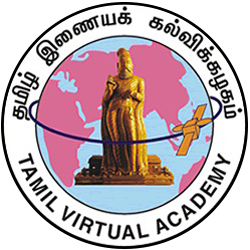Primary tabs
Lesson - 6
P10416 Peria Puraanam - Kannappa Naayanaar Puraanam
This lesson deals with Kannappa Nayanaar Puraanam of the section of Peria Puraanam called Ilaimalintha Carukkam. The devotion of Thinnanaar to Kudumithevar and the divine sensibility are seen in the worshipping mode of Thinnanar and Sivakosariyaar. As Thinnanar plucked his own eye and pasted on Lord Siva’s idol he is called Kannappar. This section teaches the primary and special aspect of love in individual as well as social life. The donation of eye to Lord Shiva is a forerunner of the modern medical phenomenon of eye-donation. On the whole, you will understand that love mode is superior to religious rituals.
The three central units of this lesson present another great epic of Peria Puraanam with the focus on one of its subdivisions called Kannappa Naayanaar Puraanam.
The first unit deals with the structure of this book, its main aim, its greatness and its auother.
In the second unit you will be able to read the story of Kannappa Naayanaar, one of 63 Naayanmaarkal in Tamil religious works. The third unit describes various events such as the character of Thinnanaar, the meeting with Kudumithevar, worshipping pattern, seeking divine world from Lord Shiva and the becoming of Thinnappar as Kannappar.
By learning this lesson, you will appreciate epics of Chola period through the great Tamil Epic of Peria Puraanam.
Inheritance of government, devotion to God and mode of love are parts of epic learning. The story of Kannappar teaches you the greatness of love over cognitions-especially in reaching the supereme stage of human life called Veeduperu. Bakthi excels Gnaana and Karma in human life. As Kannappar attained sainthood in only six days illustrates how the length of worship is less important than the depth of devotion. Flesh for flesh as a proverb proves the practicality of the words of great people. You will certainly understand the pride of the author, the greatness of Thinnanaar, the way of remaining devoted, the bakthi of religious persons and all such aspects of Tamil culture of this great age of epics.


